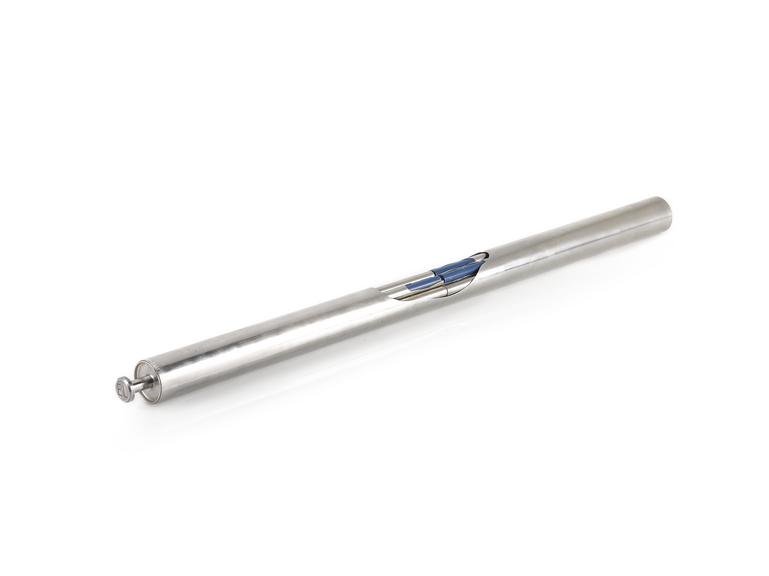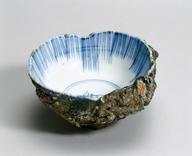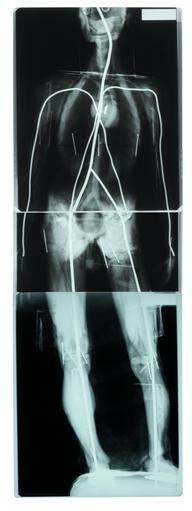







Cobalt-60 source, cut away model, non-radioactive, by Amersham International, Little Chalfont, Buckinghamshire, England, 1975-1985
Cobalt-60 is an artificially produced radioactive material, made in a nuclear reactor. With fewer damaging effects on the skin than radium, it was introduced into radiotherapy in 1951, and helped medics treat tumours deep inside the body for the first time.
More than 35 million people with cancer worldwide have had cobalt-60 radiotherapy. The first cobalt-60 machines were made and used at University Hospital, Saskatoon, Canada.
Details
- Category:
- Nuclear Physics
- Object Number:
- 1982-1434
- Materials:
- steel (metal), metal (unknown) and paint
- Measurements:
-
overall (lying flat): Width = 710 mm x Diameter = 40 mm, 4.06 kg
- type:
- cut-away object
- credit:
- Amersham International plc




